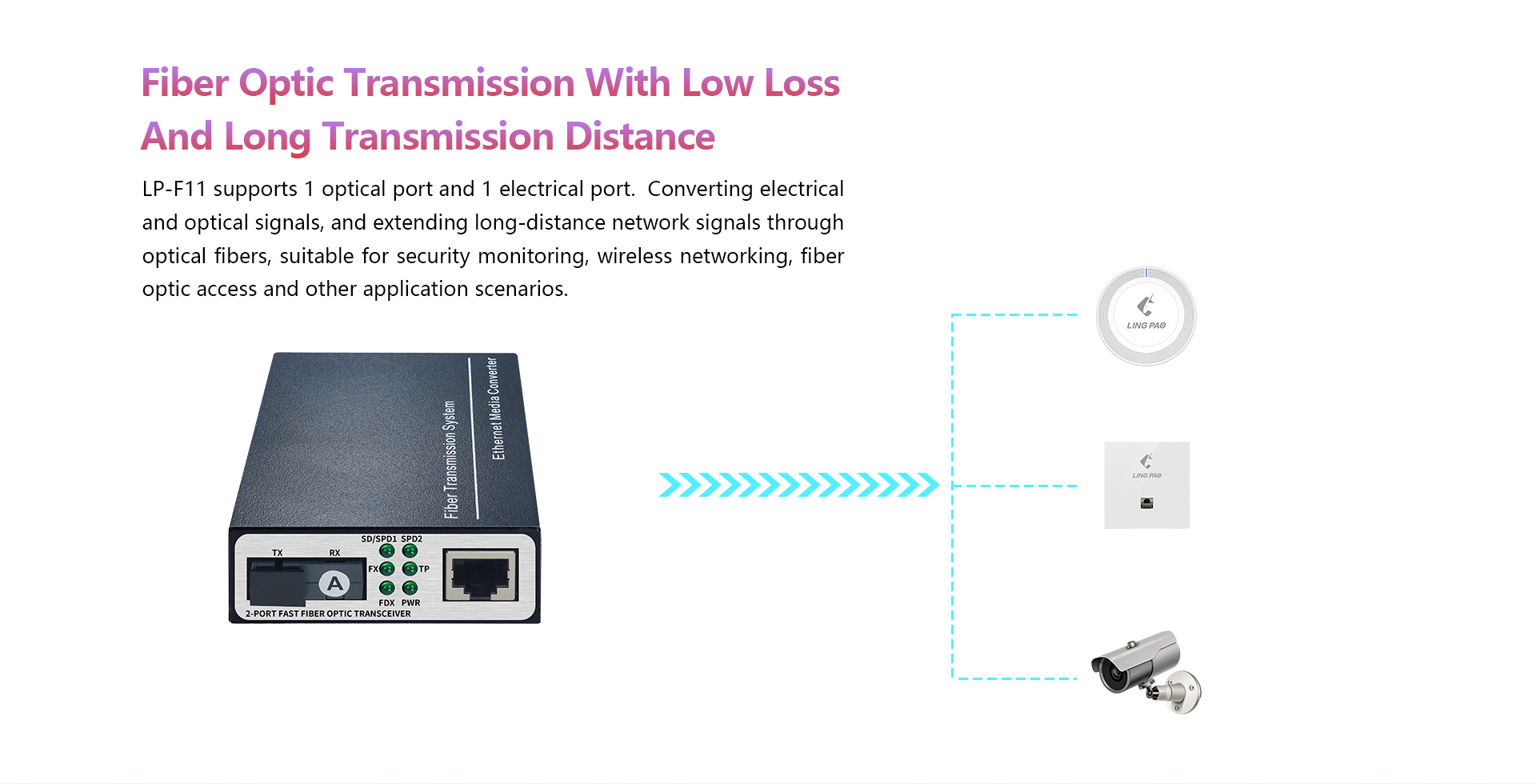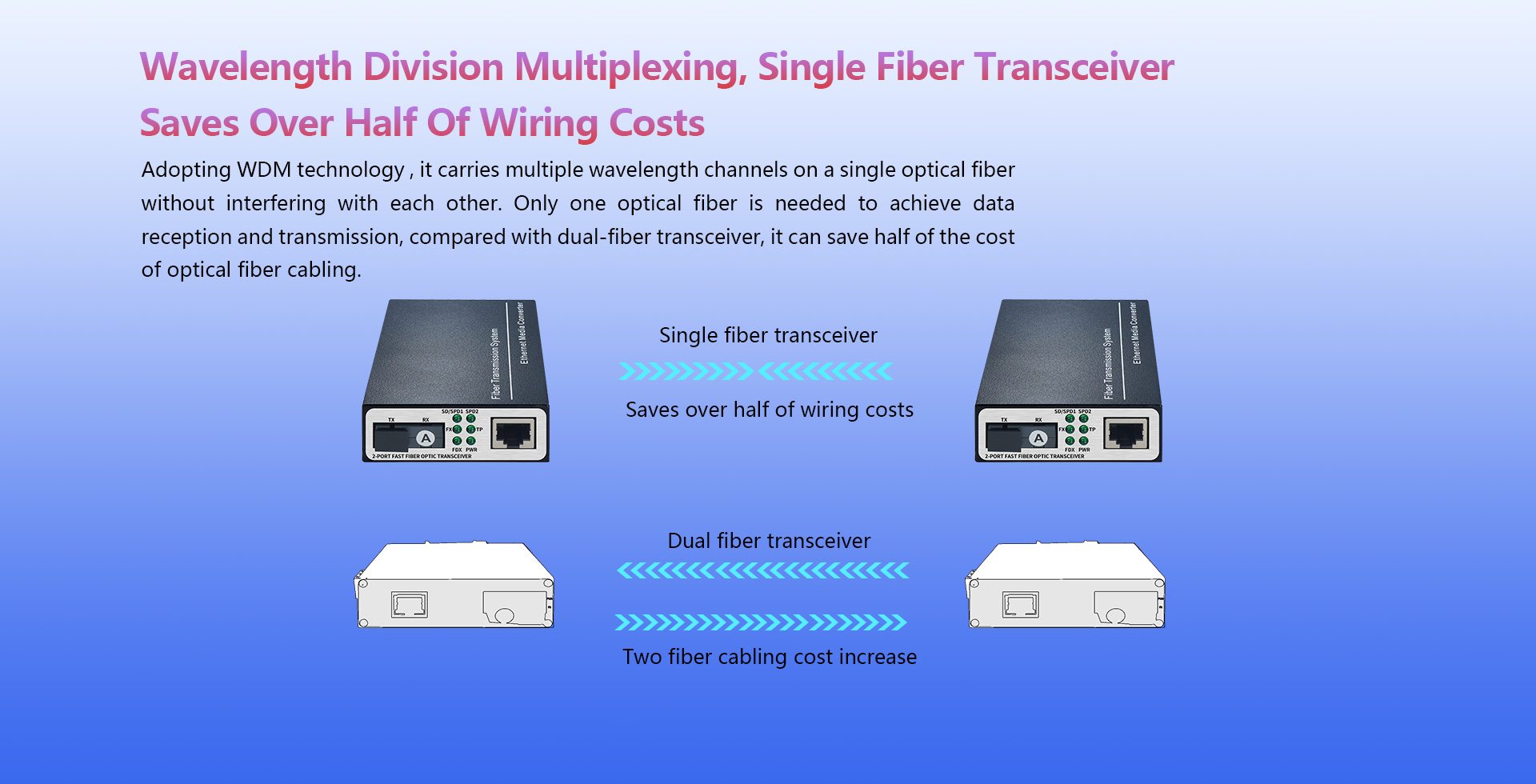Cómo funcionan los transceptores de fibra óptica: Visión general
Fiber optic transceivers, also known as fiber optic modules or pluggable transceivers, are devices used in telecommunications and networking to transmit and receive data over long distances through fiber optic cables. These essential components play an important role in the functioning of the modern internet and are responsible for the high-speed data transfer that we have come to expect.
In this article, we will explore the science behind how fiber optic transceivers work, their different types, and their various applications.
How do fiber optic transceivers work?
Fiber optic transceivers work by converting electrical signals into light signals and vice versa. They use a combination of lasers, photodiodes, and other electronic components to transmit and receive data through a fiber optic cable.
The basic principle behind the working of fiber optic transceivers is the conversion of data from the electrical domain to the optical domain. This is achieved through the use of a laser, which generates light signals that carry the data. The light signals are then transmitted through the fiber optic cable, which is made up of thin strands of glass or plastic that act as a medium for the light to travel through.
On the receiving end, the transceiver uses a photodiode to convert the light signals back into electrical signals. These electrical signals are then processed and decoded to retrieve the original data.
Types of fiber optic transceivers:
There are several types of fiber optic transceivers, but the two main categories are single-mode and multi-mode. The difference between these two types lies in the thickness and structure of the fiber optic cable.
Single-mode transceivers are used for long-distance communication, typically over 10km, and they use a thin core fiber optic cable for transmission. On the other hand, multi-mode transceivers are used for shorter distances, generally up to 2km, and they use a thicker core fiber optic cable for transmission.
Apart from these, there are also specific types of transceivers like Small Form-factor Pluggable (SFP), Quad Small Form-factor Pluggable (QSFP), and C-Form-factor Pluggable (CFP) modules, which vary based on their size, power consumption, and data transfer rate.
Applications of fiber optic transceivers:
Fiber optic transceivers have numerous applications in the telecommunication and networking industry, some of which are listed below:
- Internet service providers (ISPs) use fiber optic transceivers to provide high-speed internet services to their customers. These transceivers enable the ISPs to offer faster and more reliable internet connections, making it possible for users to access content online without any delays.
- Telecommunications companies also use fiber optic transceivers to transmit phone conversations and other forms of communication. The use of these transceivers allows for a greater number of conversations to take place simultaneously as compared to traditional copper wires.
- Data centers, which are essential for the storage, processing, and distribution of data in large organizations, also rely on fiber optic transceivers. These transceivers facilitate high-speed data transfer between servers, enabling the seamless running of various applications and services.
- Security systems, such as CCTV cameras, also use fiber optic transceivers to transmit video feeds over long distances. This is especially useful for large-scale security operations where cameras need to be placed in different locations.
- Military applications, such as communication systems and radars, also rely on fiber optic transceivers for their high-speed data transfer needs. The use of these transceivers makes it possible for the military to exchange critical information in real-time.
fiber optic transceivers are an essential part of modern telecommunications and networking systems. They enable high-speed data transfer over long distances and have numerous applications in different industries. As technology continues to advance, so does the demand for faster and more reliable data transfer, making fiber optic transceivers a crucial component in the functioning of our increasingly interconnected world.

Choosing the Right Fiber Optic Transceiver for Your Network
In today’s rapidly advancing technology landscape, the need for high-speed internet has never been more important. With the rise of cloud computing, internet of things (IoT) devices, and streaming services, the demand for faster and more reliable connections has led to the widespread adoption of fiber optic networks. Fiber optic transceivers form an essential part of these networks, acting as the interface between the fiber optic cables and the electronic devices in a network. There are many factors that go into choosing the right fiber optic transceiver for your network, and in this article, we will explore some of the key considerations to help you make an informed decision.
Compatibility and Interoperability
When selecting a fiber optic transceiver, it is essential to consider compatibility and interoperability with your existing network infrastructure. The transceiver you choose must be compatible with your network equipment, including switches, routers, and servers, to ensure seamless communication. It is advisable to consult the equipment manufacturer or a reputable fiber optic specialist to ensure compatibility before purchasing a transceiver.
Another crucial aspect is interoperability, which refers to the ability of transceivers from different manufacturers to communicate with each other. While most transceivers are designed to work with a wide range of network equipment, it is still important to verify interoperability to avoid any compatibility issues.
Data Rate and Transmission Distance
The data rate and transmission distance are two critical factors that determine the performance of a fiber optic transceiver. Data rate, measured in Gigabits per second (Gbps), refers to the amount of data that can be transmitted per second. The higher the data rate, the faster the transmission speed.
Transmission distance, on the other hand, refers to the maximum distance that a transceiver can transmit data without any signal degradation. It is measured in kilometers (km) and varies depending on the type and quality of the fiber optic cable used. When selecting a transceiver, it is crucial to consider your network’s data rate requirements and the maximum distance between devices to ensure optimal performance.
Single-mode vs. Multi-mode Fibers
Another essential consideration when choosing a fiber optic transceiver is the type of fiber optic cable being used in your network. There are two main types of fiber optic cables: single-mode and multi-mode.
Single-mode fibers are typically used for long-distance transmissions and have a small diameter, allowing a single light signal to travel through the core. They offer high bandwidth and low signal loss, making them ideal for high-speed data transmission.
Multi-mode fibers, on the other hand, have a larger diameter and allow multiple light signals to travel through the core. They are commonly used for shorter distances and are less expensive than single-mode fibers. When selecting a transceiver, it is essential to choose one that is compatible with the type of fiber optic cable being used in your network.
Budget and Quality
As with any technology, cost and quality go hand in hand when it comes to fiber optic transceivers. While it may be tempting to select the cheapest option available, it is crucial to consider the quality and reliability of the transceiver. Low-quality transceivers may lead to network disruptions, downtime, and increased maintenance costs in the long run. It is advisable to invest in reputable and reliable brands, even if it means paying a little more, to ensure the smooth operation of your network.
Conclusión
Choosing the right fiber optic transceiver for your network requires careful consideration of several factors. It is essential to understand the different types of transceivers available, as well as their compatibility, data rate, transmission distance, and compatibility with your existing network infrastructure. It is also crucial to consider the type of fiber optic cable being used, as well as your budget and the quality of the transceiver. By carefully assessing these factors, you can make an informed decision and select a transceiver that will meet the performance and reliability needs of your network.

